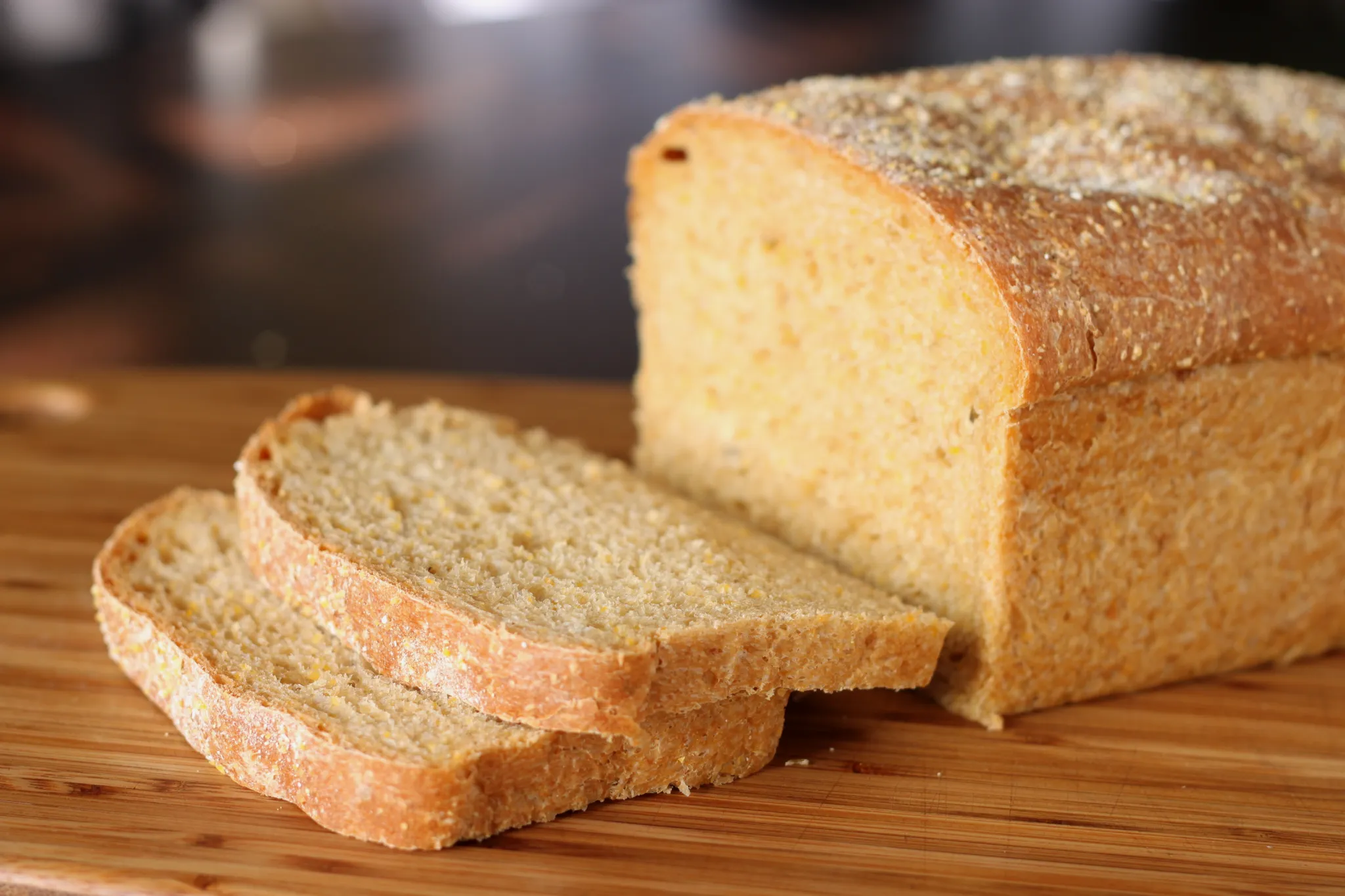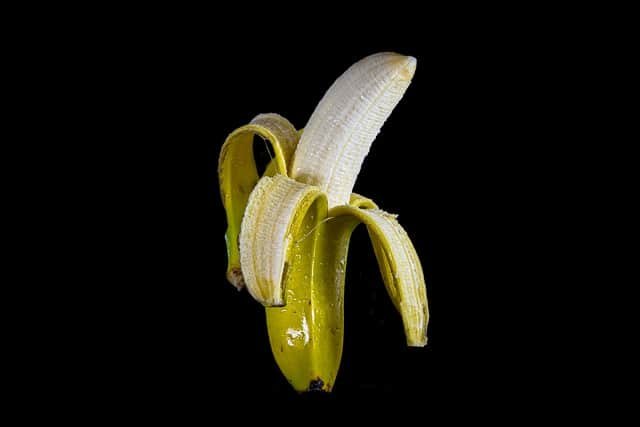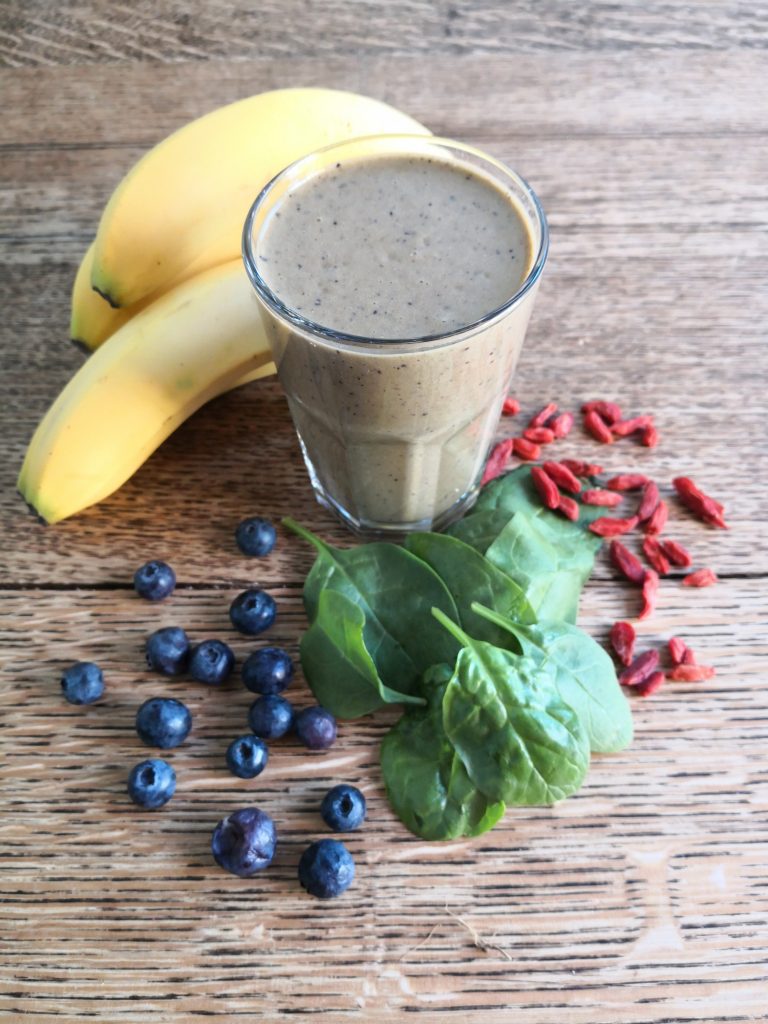
Are you craving a warm and delicious slice of banana bread, but don’t have an oven? No worries! In this article, we’ll share with you a fantastic banana bread recipe that doesn’t require an oven. You’ll be able to enjoy the comforting flavors and moist texture of banana bread, even if you don’t have access to traditional baking equipment. Get ready to whip up a batch of this mouthwatering treat in no time!
Imagine the aroma of freshly baked banana bread wafting through your kitchen, without the need for an oven. With our easy-to-follow recipe, you’ll be able to make this classic treat using alternative cooking methods. Whether you’re camping, traveling, or simply don’t have an oven at home, this recipe will come to your rescue. Get ready to indulge in the irresistible combination of ripe bananas, warm spices, and a soft, moist crumb – all without the need for traditional baking equipment.
Why Oven-Free Banana Bread?

If you’re a fan of banana bread but don’t have access to an oven, don’t worry! There’s a solution that will allow you to enjoy this delicious treat without the need for traditional baking equipment. In this section, we’ll explore why oven-free banana bread is a great alternative and how you can easily make it at home.
Convenience: One of the main advantages of making banana bread without an oven is the convenience it offers. Not everyone has access to an oven, especially when you’re on the go or traveling. With an oven-free recipe, you can still satisfy your craving for banana bread wherever you are. Whether you’re camping in the great outdoors or staying in a hotel room with limited cooking facilities, you can whip up a batch of banana bread using alternative cooking methods.
Versatility: Another reason to opt for an oven-free banana bread recipe is its versatility. While traditional banana bread is baked in an oven, oven-free recipes allow you to explore different cooking methods such as using a stovetop, slow cooker, or even a microwave. This opens up a world of possibilities and allows you to get creative with how you prepare your banana bread. You can experiment with different flavors, textures, and cooking times to find the method that suits your taste preferences.
Moist and Delicious: Despite not being baked in an oven, oven-free banana bread can still be moist and delicious. The alternative cooking methods help to lock in the moisture and create a soft and tender texture. In fact, some people even prefer the texture of oven-free banana bread over the traditional version. So, if you’re looking for a different take on this classic treat, oven-free banana bread is definitely worth a try.
Now that you understand the advantages of oven-free banana bread, let’s move on to the next section and explore some popular alternative cooking methods that you can use to make this delicious treat.
Selecting the Ripe Bananas
So you’re ready to embark on your banana bread baking journey, but first things first – selecting the right bananas! The key to a delicious banana bread lies in using perfectly ripe bananas. In this section, we’ll guide you on how to choose the best bananas for your oven-free banana bread recipe.
When it comes to bananas, you’ll want to avoid using green, unripe bananas as they won’t provide the natural sweetness and flavor that ripe bananas do. On the other hand, bananas that are overly ripe and mushy may make your banana bread too moist and dense. The sweet spot is finding bananas that are yellow with a few brown spots.
Here are a few tips to help you select the ripest bananas for your banana bread:
- Look for the right color: Choose bananas that are mostly yellow with a few brown specks or spots. These bananas are at their peak ripeness and will add the perfect amount of sweetness to your bread.
- Check the firmness: Gently squeeze the bananas to ensure they are neither too firm nor too soft. You want them to be slightly soft and yielding to the touch. If they feel too firm, they need a little more time to ripen. If they feel too soft and mushy, they may be too ripe for baking.
- Smell the bananas: Give the bananas a quick sniff. Ripe bananas have a sweet, fragrant aroma. If they smell strongly of bananas, it’s a good indication that they are ready to be used in your banana bread recipe.
Remember, if you don’t plan on using the bananas right away, you can choose slightly less ripe bananas and let them ripen further at room temperature. Once they reach the desired level of ripeness, you can proceed with your banana bread recipe.
Gathering the Ingredients
Making banana bread without an oven is a great way to enjoy this delicious treat even if you don’t have access to traditional baking equipment. Before you start, make sure you have all the necessary ingredients on hand. Here’s what you’ll need:
- Ripe bananas: The key to a flavorful banana bread is using ripe bananas. Look for bananas that are mostly yellow with a few brown spots. These bananas are sweeter and have a stronger banana flavor, which will enhance the taste of your bread.
- All-purpose flour: You’ll need about two cups of all-purpose flour for this recipe. It provides the structure and texture for your banana bread.
- Sugar: To add sweetness, you’ll need about one cup of granulated sugar. You can adjust the amount according to your preference, but keep in mind that ripe bananas also add natural sweetness to the bread.
- Baking soda: This is the leavening agent that helps your bread rise. You’ll need about one teaspoon of baking soda.
- Salt: A pinch of salt enhances the flavors in your banana bread. Use about half a teaspoon of salt.
- Vegetable oil: About half a cup of vegetable oil adds moisture to your bread and keeps it soft and tender.
- Eggs: Two large eggs provide structure and help bind the ingredients together.
- Vanilla extract: A teaspoon of vanilla extract adds a lovely aroma and flavor to your banana bread.
- Optional mix-ins: If you like, you can add some additional ingredients to your banana bread for extra flavor and texture. Popular options include chocolate chips, chopped nuts, or dried fruits.

Now that you have all the ingredients, you’re ready to move on to the next step: preparing the batter.
Mixing the Wet and Dry Ingredients
Now that you have gathered all the necessary ingredients for your delicious banana bread, it’s time to start mixing everything together. This step is crucial in ensuring that your banana bread turns out moist and flavorful.
To begin, you’ll want to gather two separate bowls – one for the wet ingredients and one for the dry ingredients. By keeping them separate initially, you’ll be able to evenly distribute the ingredients and prevent any lumps or clumps from forming in the final batter.
In the bowl for the wet ingredients, mash 3-4 ripe bananas until smooth. The riper the bananas, the sweeter and more flavorful your banana bread will be. Remember, you’re looking for bananas that are mostly yellow with a few brown spots. These bananas will give your bread that perfect balance of sweetness and moisture.
Next, add 1/2 cup of sugar, 1/2 cup of vegetable oil, 2 eggs, and 1 teaspoon of vanilla extract to the mashed bananas. Whisk everything together until well combined. The sugar will add sweetness, while the oil and eggs will contribute to the moist texture of the bread. The vanilla extract will enhance the overall flavor, giving your banana bread that irresistible aroma.
In a separate bowl, whisk together 1 and 3/4 cups of all-purpose flour, 1 teaspoon of baking soda, and 1/2 teaspoon of salt. These dry ingredients will provide the structure and leavening agents for your banana bread. By whisking them together, you’ll ensure an even distribution throughout the batter.

« Delicious Homemade Banana Bread Recipe with 3 Ripe Bananas
Baking Banana Bread with Unripe Bananas: Tips for a Delicious Recipe »
Once the dry ingredients are well combined, gradually add them to the bowl of wet ingredients. Use a spatula or wooden spoon to mix everything together until just combined. Be careful not to overmix, as this can result in a dense and tough bread. The batter should be thick and lumpy, with no streaks of flour remaining.
At this point, you can also add any optional mix-ins to your banana bread batter. Some popular choices include chocolate chips, chopped nuts, or even a sprinkle of cinnamon for an extra flavor boost. Gently fold in your chosen mix-ins until evenly distributed throughout the batter.
And there you have it – your wet and dry ingredients are now expertly mixed together, ready to be transformed into a delectable loaf of banana bread. But we’re not quite done yet! Keep reading to find out how
Choosing the Right Baking Pan
When it comes to making banana bread without an oven, choosing the right baking pan is essential. While you may not have access to a traditional oven, you still want to ensure that your banana bread bakes evenly and has the perfect texture. Here are a few tips to help you select the right baking pan for your oven-free banana bread:
1. Size Matters: The size of your baking pan will directly affect the baking time and the texture of your banana bread. For a standard loaf, a 9×5-inch baking pan is ideal. It allows the batter to spread evenly and ensures that the bread is cooked all the way through. If you prefer smaller loaves, you can use smaller baking pans or even muffin tins for individual servings.
2. Material Considerations: When it comes to choosing the material for your baking pan, there are a few options to consider. Aluminum pans are lightweight and heat up quickly, which can result in faster baking times. Glass pans, on the other hand, distribute heat more evenly and can help prevent the bottom of your banana bread from burning. Silicone pans are flexible and non-stick, making it easy to remove the bread once it’s done.
3. Shape and Depth: While a traditional loaf pan is the most common choice for baking banana bread, you can get creative with the shape and depth of your pan. Round cake pans, square baking dishes, or even bundt pans can add a unique twist to your oven-free banana bread. Just make sure to adjust the baking time accordingly, as different shapes and depths may require more or less time in the oven.
Remember, the right baking pan can make all the difference when it comes to baking delicious banana bread without an oven. So, take your time to choose a pan that suits your preferences and experiment with different shapes and sizes. With the right pan in hand, you’ll be well on your way to enjoying a moist and flavorful loaf of banana bread, no oven required!
And now, let’s move on to the next step: Mixing the Wet and Dry Ingredients.
Baking on Stovetop or Pressure Cooker

If you don’t have an oven, don’t worry! You can still enjoy a delicious homemade banana bread by using your stovetop or pressure cooker. These alternative methods are perfect for those who don’t have access to an oven or simply prefer a different cooking technique. Let’s explore how you can bake banana bread without an oven.
Stovetop Baking
Baking on the stovetop is a great option if you have a heavy-bottomed pan or skillet. Here’s a simple method to follow:
- Preheat your pan on medium-low heat for a few minutes.
- Grease the pan with butter or oil to prevent the bread from sticking.
- Pour the banana bread batter into the pan, making sure not to fill it more than halfway.
- Cover the pan with a lid and cook on low heat for about 45-60 minutes. You can occasionally check the bread’s progress by inserting a toothpick into the center. If it comes out clean, your banana bread is ready!
Pressure Cooker Baking
Using a pressure cooker is another fantastic way to bake banana bread without an oven. Here’s how you can do it:
- Grease a baking pan or a heatproof dish that fits inside your pressure cooker.
- Pour the banana bread batter into the greased pan, making sure not to fill it more than halfway.
- Add water to your pressure cooker, following the manufacturer’s instructions.
- Place a trivet or a heatproof stand inside the cooker, ensuring it’s above the water level.
- Carefully place the pan with the banana bread batter onto the trivet.
- Close the pressure cooker and cook on medium heat for about 45-60 minutes. Remember to follow the cooking time recommended for your specific pressure cooker.
Both stovetop and pressure cooker methods may require some trial and error to find the perfect cooking time and temperature for your specific setup. However, with a little practice, you’ll be able to enjoy a moist and delicious banana bread without the need for an oven.
Checking for Doneness
When it comes to baking banana bread without an oven, it’s crucial to know when your bread is perfectly cooked. After all, no one wants to bite into a raw or undercooked slice of bread. So, how can you check for doneness without an oven? Here are a few methods to help you out:
Toothpick Test

The tried and true toothpick test is a reliable way to determine if your banana bread is fully cooked. Simply insert a toothpick into the center of the bread and pull it out. If it comes out clean or with just a few crumbs clinging to it, your bread is ready! However, if you notice any wet batter on the toothpick, it needs a little more time in the heat.
Finger Press Test
Another way to check for doneness is the finger press test. Gently press the top of the bread with your finger. If it springs back and feels firm, it’s a good indication that your bread is done. However, if it leaves an indentation or feels soft, it needs more time to bake.
Temperature Check
For those who prefer a more precise method, you can use a food thermometer to check the internal temperature of your banana bread. Insert the thermometer into the center of the bread, avoiding any air pockets. The bread is done when the thermometer reads 200°F (93°C).
Remember, every recipe and cooking method is different, so the baking time may vary. It’s always a good idea to start checking for doneness a few minutes before the recommended baking time. And if your bread needs more time, continue baking in small increments until it passes the toothpick, finger press, or temperature test.
Cool and enjoy!
Now that your oven-free banana bread is baked to perfection, it’s time to let it cool and enjoy the deliciousness of your creation. Here are a few tips to ensure that your banana bread turns out moist and flavorful:
- Patience is key: It’s tempting to dig into your freshly baked banana bread right away, but it’s important to let it cool completely before slicing. This allows the bread to set and prevents it from becoming too crumbly.
- Remove from the pan: After cooling the banana bread in the pan for about 10 minutes, gently remove it from the pan and transfer it to a wire rack to cool completely. This allows air to circulate around the bread, preventing it from becoming soggy.
- Slice and serve: Once the banana bread has cooled, it’s time to slice and serve. Use a sharp knife to cut even slices and serve it plain or with a dollop of butter or cream cheese. The choice is yours!
- Store properly: If you can resist the temptation to eat it all at once, store the remaining banana bread in an airtight container or wrap it tightly in plastic wrap. It will stay fresh for up to 3 days at room temperature, or you can refrigerate it for up to a week.
- Get creative: Banana bread is delicious on its own, but why not take it to the next level? You can add a sprinkle of cinnamon, a handful of chocolate chips, or even a swirl of Nutella to make it extra special. Get creative and experiment with different toppings and mix-ins to personalize your banana bread.

Remember, making banana bread without an oven is a versatile and convenient way to enjoy this classic treat. Whether you bake it on the stovetop or use a pressure cooker, the end result will be a moist and delicious loaf that will have you coming back for more.
Conclusion
Now that you have all the necessary information and step-by-step instructions, you’re ready to embark on your oven-free banana bread baking adventure! Whether you choose to bake on the stovetop or use a pressure cooker, you’ll be amazed at the convenience and versatility of making banana bread without an oven.
Remember to select ripe bananas for the best flavor and choose the right baking pan for the bread. Finding the perfect cooking time and temperature for your setup is crucial, so keep an eye on your bread as it bakes.
Once your banana bread is done, don’t forget to let it cool before slicing and serving. And if you have any leftovers, be sure to store them properly for maximum freshness.
Feel free to get creative with different toppings and mix-ins to personalize your banana bread. Whether it’s a sprinkle of chocolate chips, a dollop of peanut butter, or a drizzle of honey, the possibilities are endless.

So go ahead and try making banana bread without an oven. It’s a versatile and convenient way to enjoy this classic treat, and you’ll be rewarded with a delicious loaf that’s sure to impress! Happy baking!










